Stonecrops, also known as sedum, are not only easy to care for but also visually stunning. Their unique foliage and flowers make them a beautiful addition to any garden or landscape.
Appearance of Stonecrops

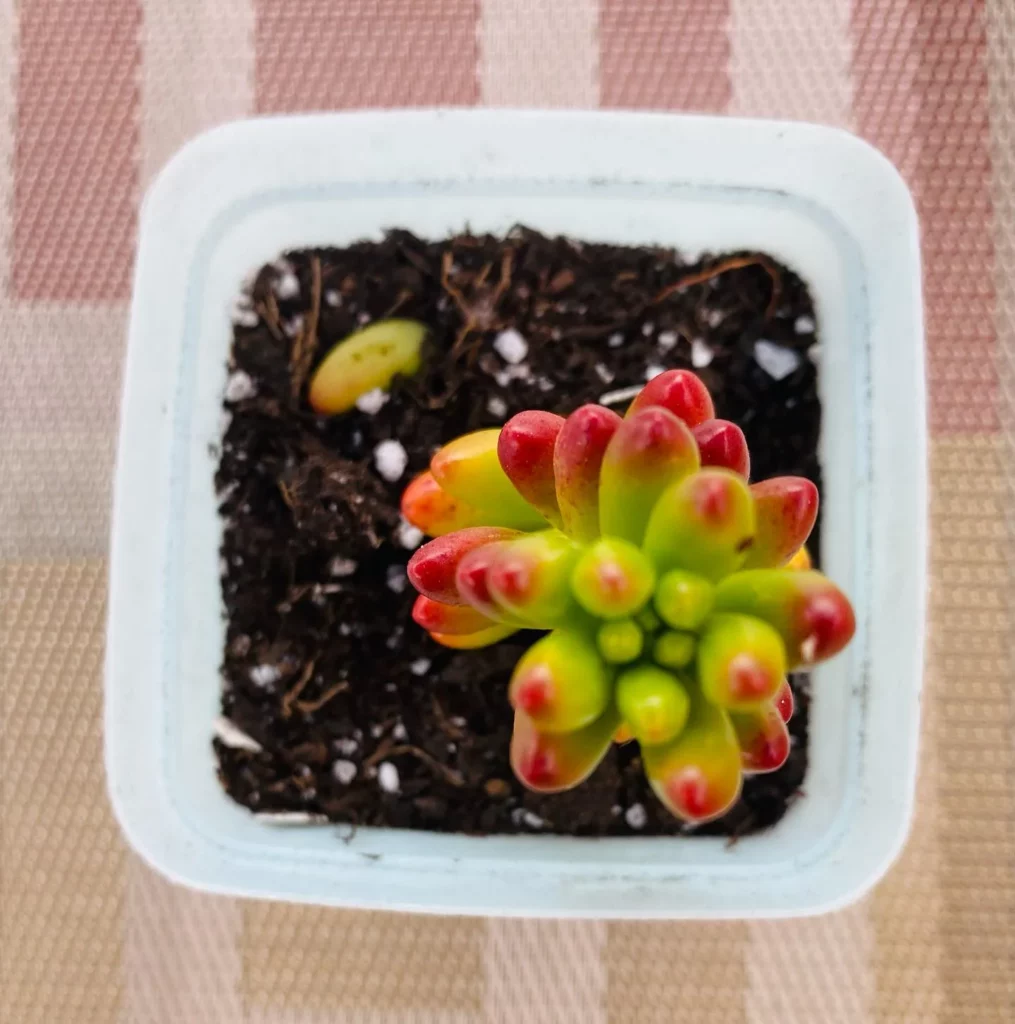
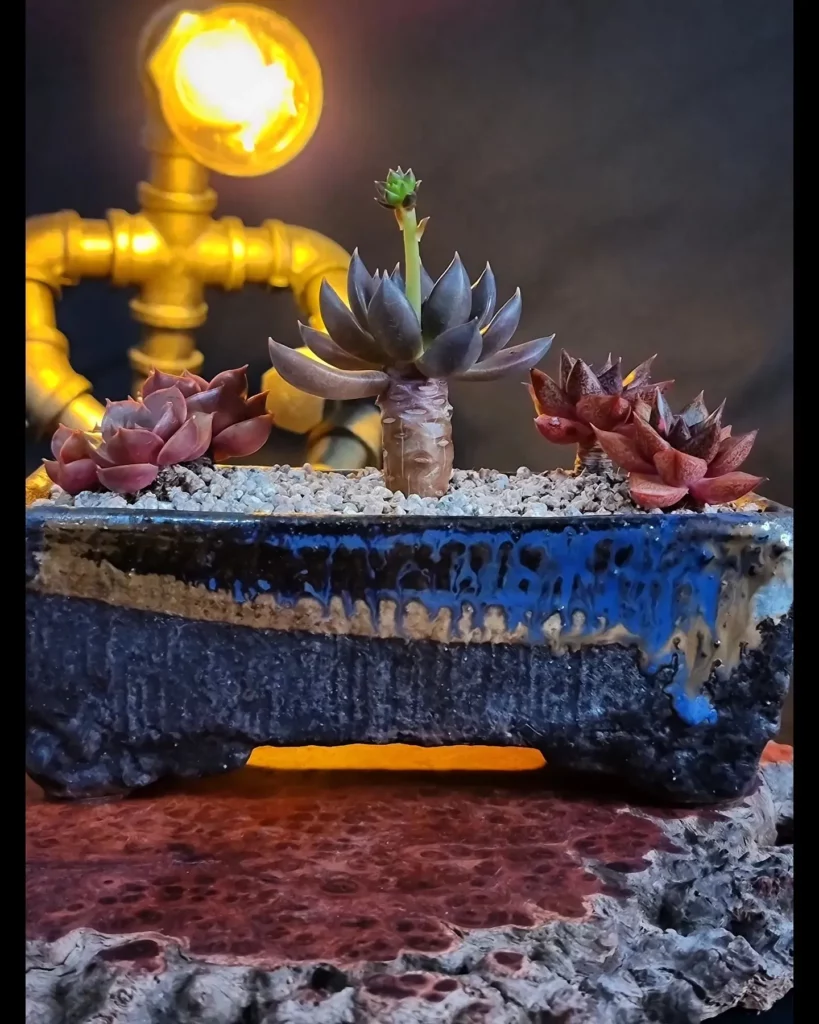
The foliage of stonecrops comes in a variety of shades, ranging from vibrant greens to deep burgundy hues. The leaves are fleshy and succulent, which means they can store water and withstand periods of drought.
The star-shaped flowers of stonecrops add a pop of color to the plant. They come in a wide range of shades, including red, pink, yellow, and white. These small and delicate flowers create a stunning contrast against the foliage, attracting bees and butterflies to your garden.
Whether planted as ground cover or used in containers, stonecrops’ appearance adds vibrancy and interest to any outdoor space.
Light Requirements for Stonecrops

Stonecrops, also known as sedums, are sun-loving succulent plants that thrive in full sun. To ensure their healthy growth and development, it’s important to provide them with adequate sunlight. Here are some key points to consider:
- Stonecrops require at least five to six hours of direct sunlight daily. This ensures that they receive the energy they need for photosynthesis and overall plant health.
- While some stonecrop varieties can tolerate partial shade, it’s important to note that they may not bloom as profusely or be as sturdy as those grown in full sun. If possible, it’s best to provide them with the recommended amount of sunlight.
- In dry and hot conditions, certain stonecrop varieties appreciate a bit of afternoon shade. This helps protect them from intense heat and reduces water loss through evaporation.
Watering Stonecrops


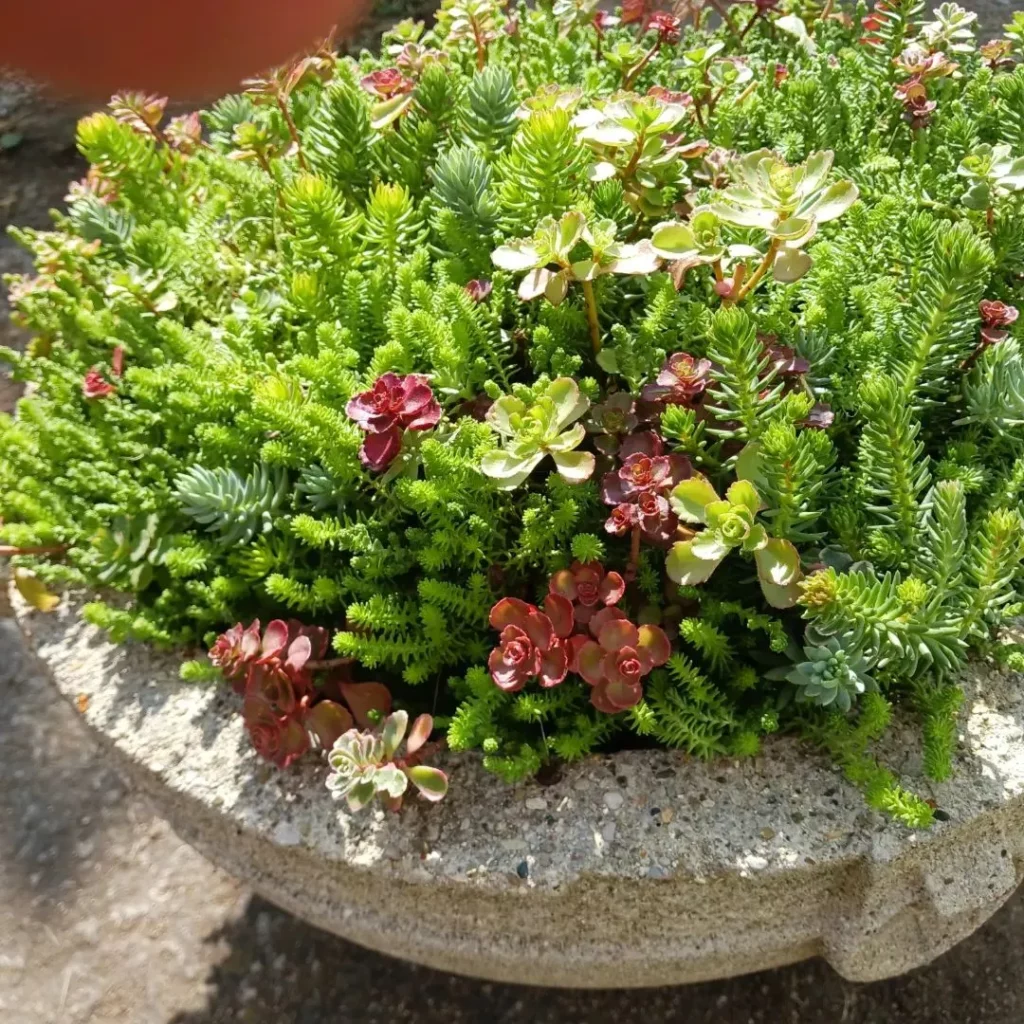
Stonecrops, also known as sedum, are resilient plants that can withstand drought conditions. Proper watering practices are essential for the health and growth of your stonecrops.
- Establishing young plants: During the first year of growth, it is important to water your young stonecrop plants regularly. Keep the soil evenly moist, but not waterlogged. This will help the plants establish their root systems and ensure they don’t dry out.
- Once established: Once your stonecrops are established, they require minimal watering. These drought-tolerant plants can typically thrive with natural rainfall. However, during prolonged hot temperatures or drought conditions, supplemental watering may be necessary. Watch for signs of wilting or drooping leaves, as this indicates that the plants need water.
- Watering techniques: When watering your stonecrops, it is best to use a gentle, slow-drip method. This allows the water to penetrate deep into the soil and reach the roots. Avoid overhead watering, as it can lead to fungal diseases and root rot.
Stonecrops have thick leaves that act as reservoirs, storing water and allowing the plants to withstand periods of drought. Overwatering can be detrimental to their health, so it’s important to strike a balance and avoid keeping the soil constantly wet.
Fertilizing Stonecrops
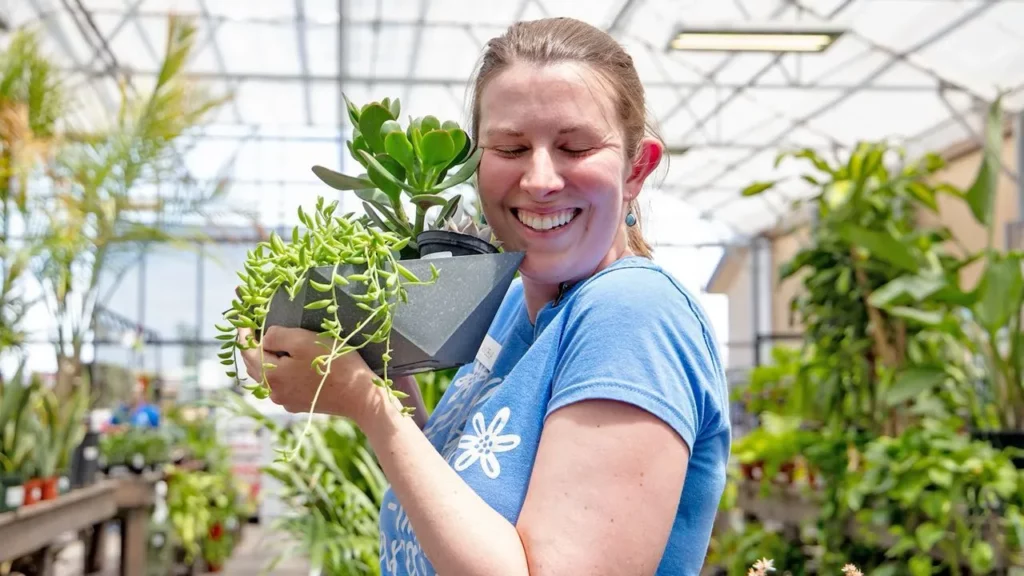
Stonecrops, also known as sedum plants, are resilient and can thrive in low-fertility soils. While they usually don’t require regular fertilization, a light application of balanced fertilizer during the spring can promote their growth and overall health.
When fertilizing stonecrops, it is crucial to follow the package instructions to avoid over-fertilization. Over-fertilizing can lead to weak and leggy growth, which is not ideal for these hardy succulent plants. A balanced fertilizer with equal ratios of nitrogen, phosphorus, and potassium is suitable for stonecrops.
Compost can also be a beneficial addition to the soil when planting stonecrops or annually in the spring. It provides natural nutrients and improves the soil’s overall health. Including compost allows stonecrops to access essential nutrients slowly over time, promoting healthy growth.
Potting Stonecrops
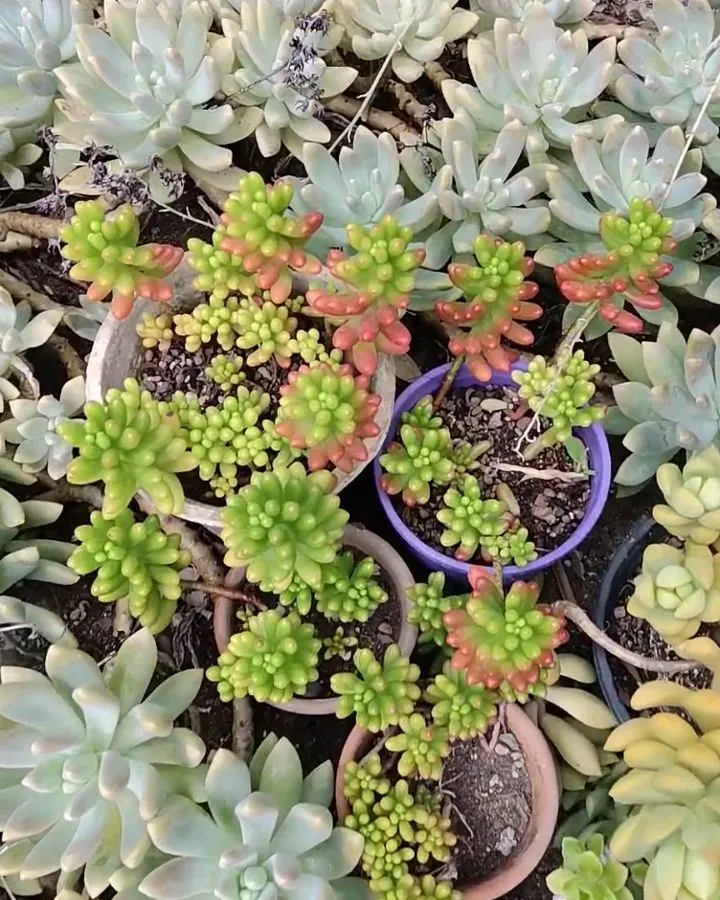
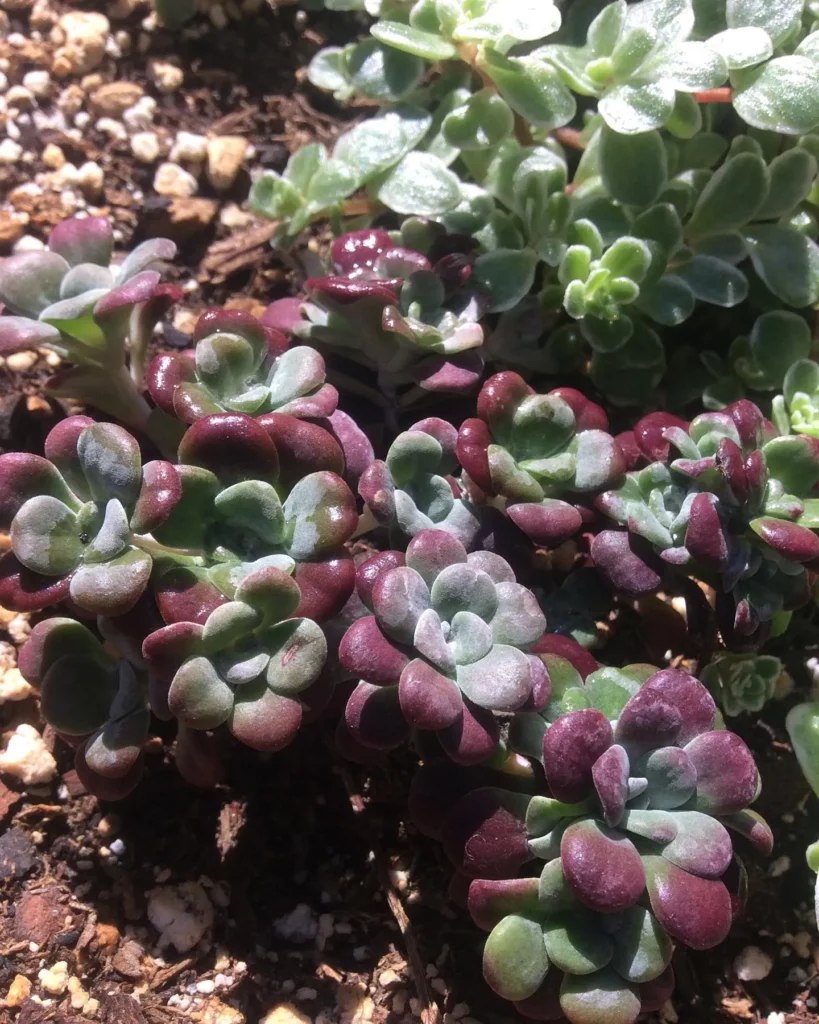

Stonecrops, also known as sedum, are versatile plants that can be grown in containers, making them ideal for various gardening spaces. If you want to enjoy the beauty of stonecrops in a container, here are some important tips for potting these colorful succulents.
- Choose the right potting mix: When planting stonecrops in containers, it is crucial to use a well-draining potting mix specifically formulated for succulent plants. This type of mix ensures that excess water can easily drain away, preventing the roots from becoming waterlogged.
- Ensure good soil drainage: Good soil drainage is essential for the health and growth of stonecrops in containers. Make sure the container has drainage holes at the bottom to allow excess water to escape. You can also add a layer of small rocks or gravel at the bottom of the container to further enhance drainage.
- Consider container size: The size of the container is an important factor when potting stonecrops. The container should be suitable for the specific stonecrop variety you are planting, providing enough space for root development. Avoid using oversized containers, as they can hold too much moisture and potentially harm the plants.
- Position the container: Place the container in a location that receives adequate sunlight for stonecrop growth. Stonecrops thrive in full sun, so choose a spot that gets at least five to six hours of direct sunlight daily. If you live in a particularly hot or dry climate, consider providing some afternoon shade to protect the plants from extreme heat.
- Watering considerations: Stonecrops in containers have different watering needs compared to those planted in the ground. The soil in containers tends to dry out faster, so you may need to water more frequently. However, it is still important to avoid overwatering, as stonecrops are drought-tolerant plants. Allow the soil to dry out between waterings to prevent root rot.
No products found.
Propagating Stonecrops
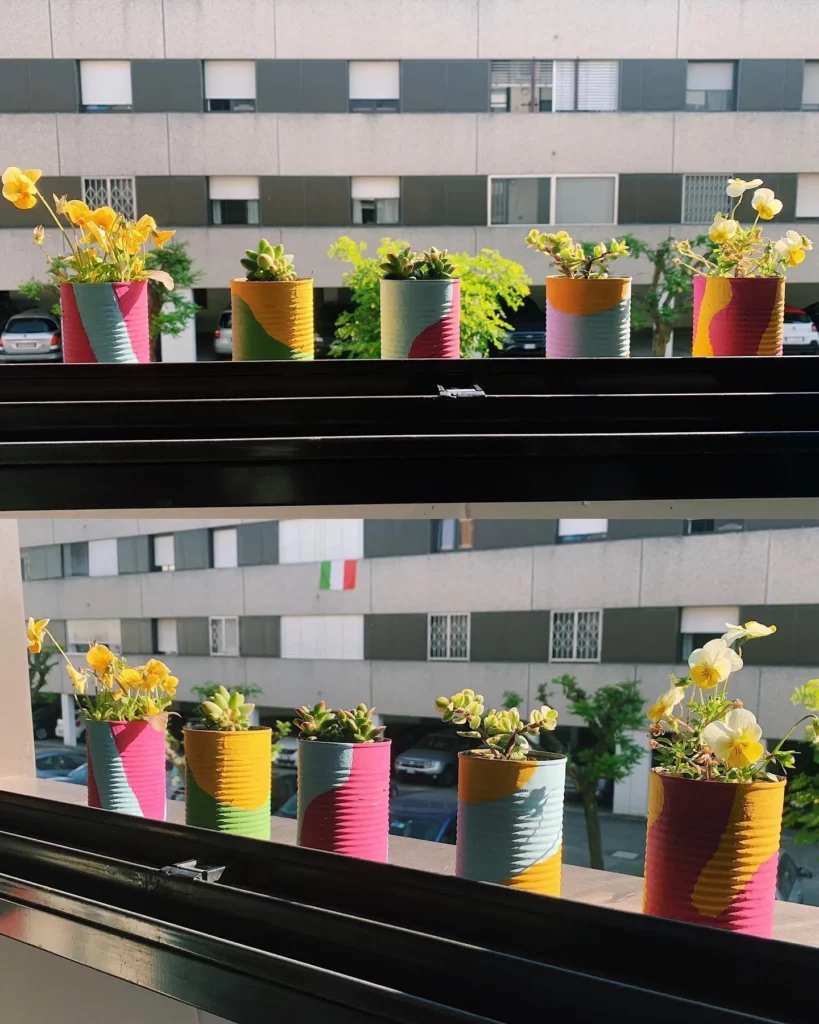
Stonecrops, also known as sedums, can be easily propagated through stem cuttings and division, allowing you to expand your garden and create more beautiful stonecrop plants without spending a lot of money. Propagation is a great way to share these colorful succulents with friends and family, or simply increase your own collection.
Stem Cuttings:
- Timing: Take stem cuttings in early spring or summer when the plants are actively growing.
- Preparation: Select a healthy stem from the parent plant and cut it just below a leaf node.
- Potting: Dip the bottom end of the cutting in a rooting hormone powder to encourage root growth, then place it in a well-draining potting mix.
- Care: Keep the potting mix lightly moist until roots develop, which usually takes a few weeks.
- Transplanting: Once the roots have developed, transplant the rooted cutting into its own pot or directly into the garden soil.
Division:
- Timing: Divide stonecrop plants in early spring or fall, when they are dormant and the weather is cooler.
- Preparation: Dig up the mature stonecrop plant and gently separate the clumps into individual sections.
- Replanting: Plant each divided section in a suitable location, ensuring they have enough space for root development.
- Care: Water the newly planted divisions thoroughly and continue to provide regular care as you would with established stonecrop plants.
Growth and Development of Stonecrops
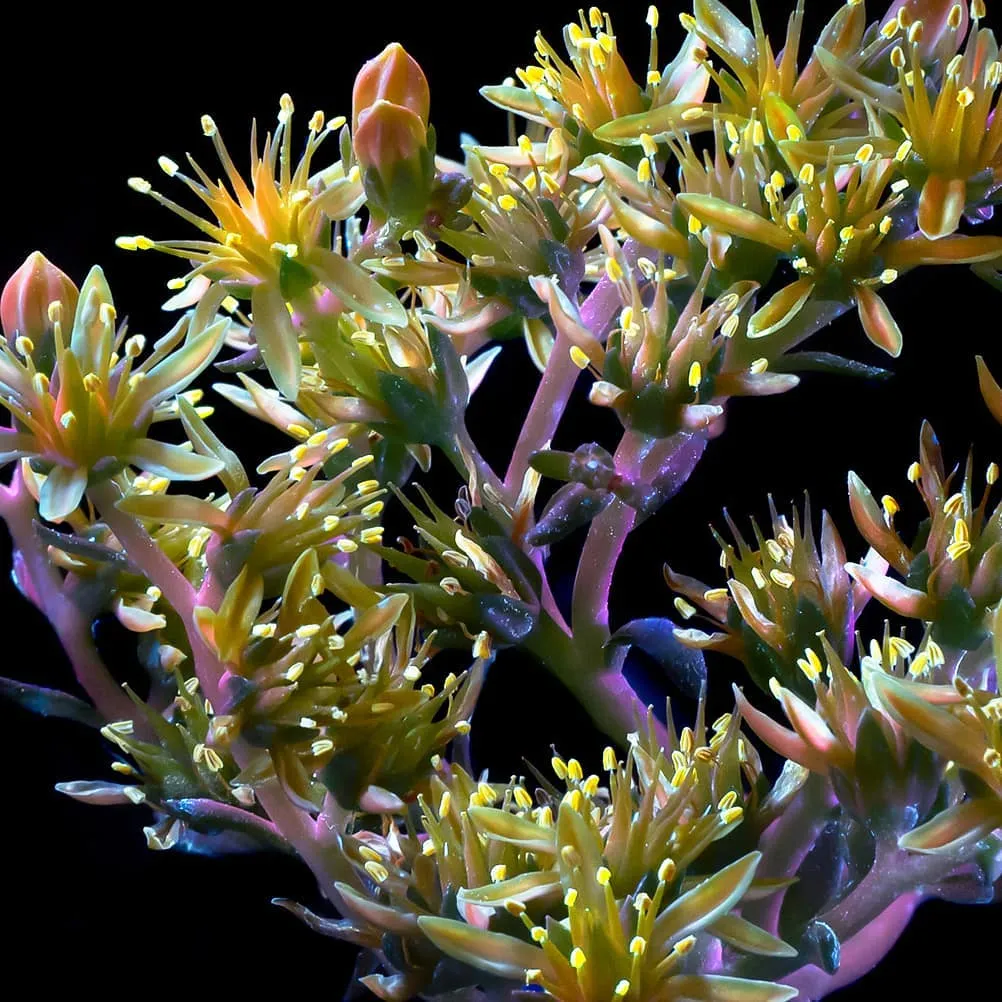

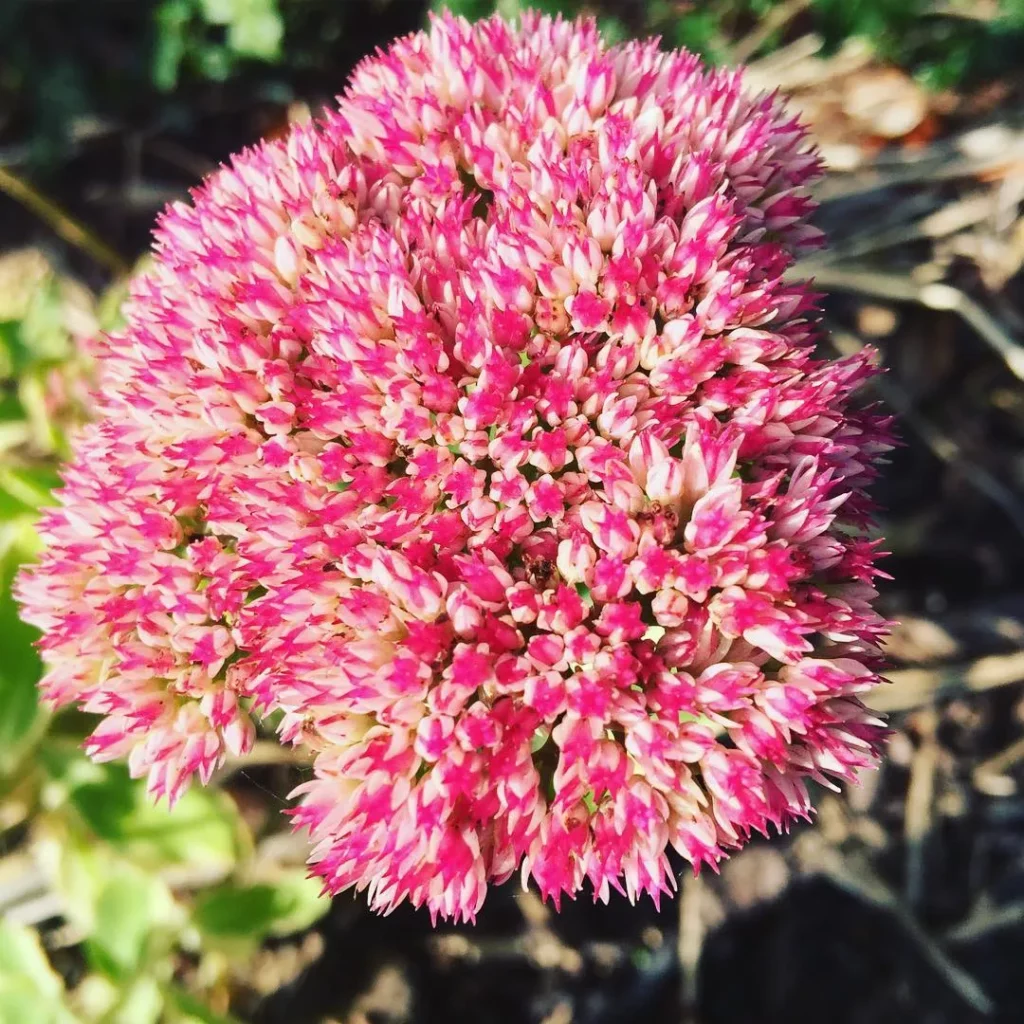
Stonecrops, also known as sedum, have a moderate growth rate that can vary depending on the specific variety. Understanding the growth and development stages of stonecrops is essential for proper care and maintenance, ensuring their overall health and vitality. Let’s explore the different stages of stonecrop development:
- Initial Planting: When you first plant stonecrops, it’s important to provide them with a suitable growing environment. Choose a sunny location with well-draining soil to encourage healthy root development.
- Root Establishment: After planting, stonecrops focus on establishing their roots. During this stage, make sure to water them consistently to aid in their root development. Once the roots are established, the plants become more resilient and can withstand dry conditions.
- Flower Blooming: As stonecrops mature, they enter the flowering stage. Stonecrop flowers add beauty and vibrant colors to your garden. Depending on the variety, the flowers can bloom in a range of colors, including red, pink, yellow, and white.
- Seasonal Changes: Stonecrops experience seasonal changes throughout the year. During the winter, many stonecrop varieties go dormant, losing their leaves and appearing bare. However, they will regrow and bloom again in the spring.
Pests and Diseases of Stonecrops
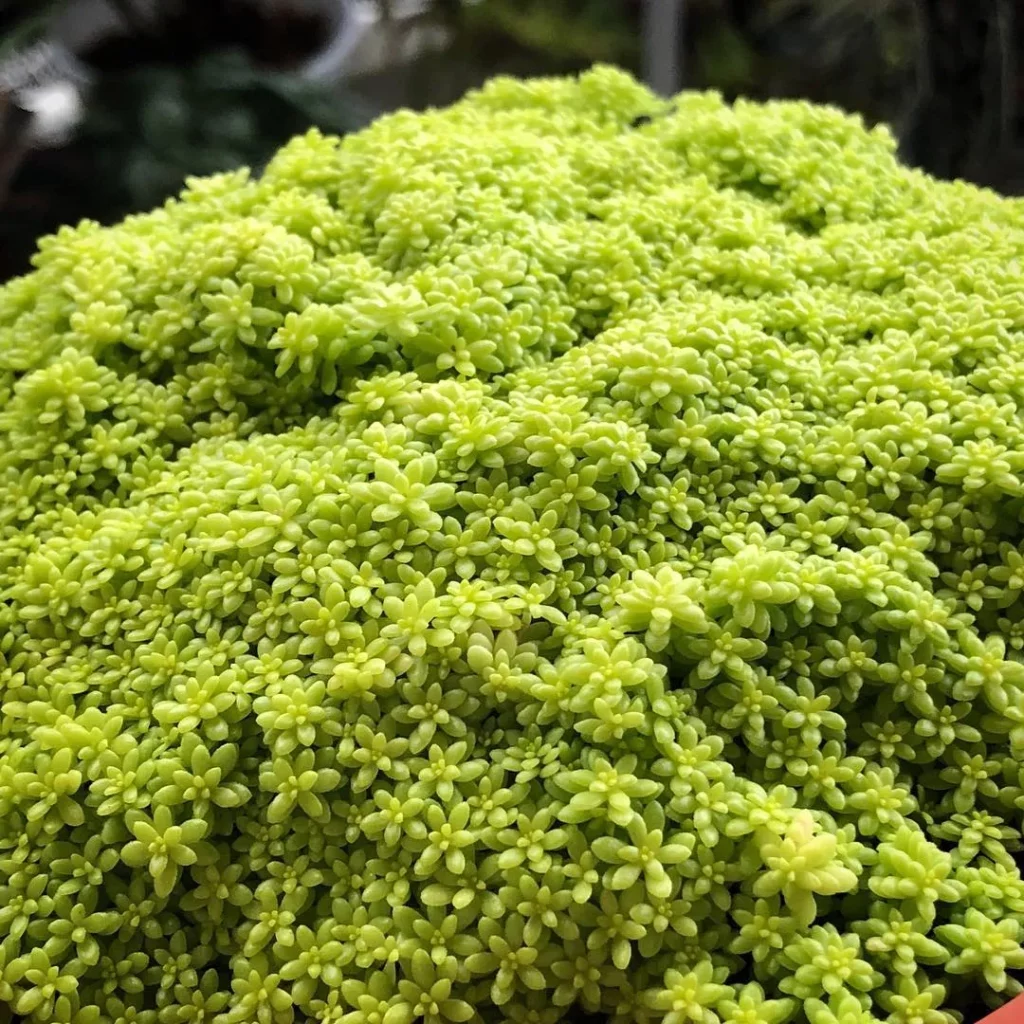
Stonecrops are generally resistant to pests and diseases, making them low-maintenance plants. However, it’s important to be aware of common issues that can affect your stonecrops to ensure their health and longevity.
1. Crown Rot: One of the main diseases that can affect stonecrops is crown rot, which is caused by fungal infections. This can occur when the soil is overly saturated or if there is poor drainage. To prevent crown rot, make sure your stonecrops are planted in well-draining soil and avoid overwatering.
2. Fungal Diseases: Stonecrops can also be susceptible to various fungal diseases, such as powdery mildew and leaf spot. These infections can cause discoloration, wilting, and leaf damage. To prevent fungal diseases, ensure good air circulation by spacing your plants properly and avoid overhead watering.
3. Slugs and Snails: While stonecrops are generally not a favorite food for slugs and snails, these pests may occasionally feed on them, especially when other food sources are scarce. To protect your stonecrops from slugs and snails, you can use organic pest control methods like beer traps or handpicking the pests.
Popular Stonecrop Varieties
Stonecrops, also known as sedums, offer a wide array of popular varieties that can enhance the beauty of your garden or landscape. These stonecrop cultivars come in various colors, heights, and growth habits, allowing you to choose the perfect one for your gardening preferences. Let’s explore some of the most sought-after stonecrop varieties:
1. ‘Autumn Joy’: This perennial favorite is renowned for its stunning clusters of dusty pink flowers that transform into bronze as they age. It can reach a height of 18-24 inches and is a reliable bloomer in late summer and early fall.
2. ‘Brilliant’: As the name suggests, ‘Brilliant’ stonecrop boasts radiant rosy-pink flowers that attract butterflies and bees. It has a compact growth habit and reaches a height of around 12 inches, making it perfect for borders and container gardening.
3. ‘Black Jack’: This unique stonecrop variety captivates with its dark, almost black foliage that forms a beautiful contrast against its delicate pink flowers. It grows to a height of about 6 inches and adds a touch of drama to your garden.
4. ‘Blue Spruce’: With its striking blue-green foliage that resembles a spruce tree, this stonecrop variety adds a touch of uniqueness to any landscape. It produces bright yellow flowers and has a trailing habit, making it an excellent choice for rock gardens and ground cover.
5. ‘Vera Jamison’: This eye-catching stonecrop variety features vibrant reddish-purple foliage that intensifies in color during the cooler months. It produces clusters of pink flowers and grows to a height of 12-18 inches, making it a focal point in any garden.
6. ‘Angelina’: Known for its vibrant yellow-gold foliage, ‘Angelina’ stonecrop creates a striking contrast against other plants. Its needle-like leaves and spreading habit make it a popular choice for ground cover, rock gardens, and containers.
7. ‘Dragon’s Blood’: This sedum variety showcases deep red foliage that retains its color throughout the year. It produces clusters of pink flowers and has a trailing growth habit, making it ideal for cascading over walls or spilling out of containers.
These popular stonecrop varieties are just a glimpse of the incredible diversity and beauty that sedums offer. Consider incorporating these stunning plants into your garden or landscape to create a visually captivating and low-maintenance oasis.
FAQ
How do I grow stonecrops?
To grow stonecrops, plant them in a sunny location that receives at least five to six hours of direct sunlight daily. Make sure the soil is well-draining and water young plants regularly during their first year. Once established, stonecrops are drought-tolerant and only need supplemental water during prolonged hot temperatures or drought conditions. They do not require regular fertilization but can benefit from a light application of balanced fertilizer in the spring.
What do stonecrops look like?
Stonecrops have unique foliage and flowers. The foliage comes in shades and textures ranging from green to burgundy and has fleshy leaves that store water, making them succulents. The flowers are small and star-shaped, blooming in various colors such as red, pink, yellow, and white. Their appearance adds vibrancy and interest to any garden or landscape.
How much sunlight do stonecrops need?
Stonecrops thrive in full sun and ideally require at least five to six hours of direct sunlight daily. Some varieties can tolerate partial shade, but they may not bloom as profusely or be as sturdy. However, in dry and hot conditions, certain stonecrop varieties appreciate a bit of afternoon shade.
How often should I water stonecrops?
Stonecrops are drought-tolerant plants and can survive with minimal watering once established. However, it is important to water young plants regularly during their first year to help them establish their roots and prevent the soil from drying out. Once established, stonecrops typically only need supplemental water during prolonged hot temperatures or drought conditions.
Do stonecrops need fertilizer?
Stonecrops do not require regular fertilization, as they can tolerate low-fertility soils. However, a light application of balanced fertilizer in the spring can benefit their growth. It is important to follow the package instructions to avoid over-fertilizing, which can result in weak and leggy growth. Compost can also be added during planting or annually in the spring to provide natural nutrients to the soil.
Can I grow stonecrops in containers?
Yes, stonecrops can be grown in containers, making them versatile plants for various gardening spaces. When planting stonecrops in containers, it is important to use a well-draining potting mix specifically formulated for succulent plants. Good soil drainage is essential for the health and growth of stonecrops in containers. The container size should be suitable for the specific stonecrop variety, ensuring enough space for root development.
How can I propagate stonecrops?
Stonecrops can be propagated through various methods, including stem cuttings and division. Stem cuttings can be taken in early spring or summer, while division is best done in early spring or fall. Propagation allows you to expand your garden and create more stonecrop plants without spending a lot of money. Each propagation method requires specific steps and timing, which we will discuss in detail in this section.
What are the growth stages of stonecrops?
Stonecrops have a moderate growth rate, but it can vary depending on the specific variety. Understanding the growth and development stages of stonecrops can help you properly care for and maintain them. From the initial planting to the establishment of roots, the blooming of flowers, and seasonal changes, each stage plays a crucial role in the overall growth and vitality of stonecrops.
Are stonecrops prone to pests and diseases?
Stonecrops are generally resistant to pests and diseases, making them low-maintenance plants. However, certain conditions can make them susceptible to issues such as crown rot and fungal diseases. Slugs and snails may occasionally feed on stonecrops. Understanding common pests and diseases that can affect stonecrops will help you identify and address any issues promptly to ensure the health and longevity of your plants.
What are some popular stonecrop varieties?
There are hundreds of stonecrop varieties, each with its own unique characteristics and attributes. Some popular varieties include ‘Autumn Joy’, ‘Brilliant’, ‘Black Jack’, ‘Blue Spruce’, ‘Vera Jamison’, ‘Angelina’, and ‘Dragon’s Blood’. These varieties offer a range of colors, heights, and growth habits, allowing you to choose the perfect stonecrop for your garden or landscape.




